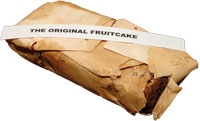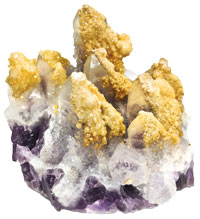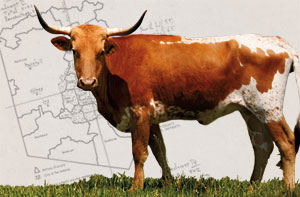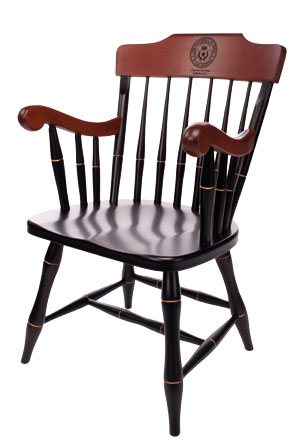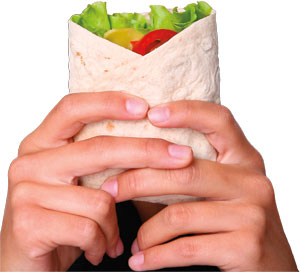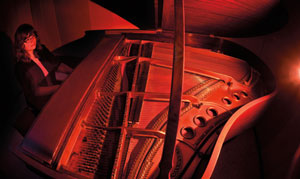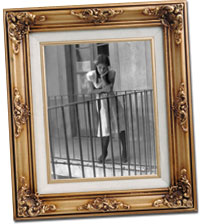
Unlocking the Vault
Sometimes the most memorable gifts a university receives are those with a highly symbolic or personal meaning, the type of gift where the dollar sign in front of a donation has less intrinsic value than the story behind it.
The very ground that UTSA sits on was a gift of rocks and Hill Country land and a confidence that from that donated earth, the Main Campus’ buildings and Sombrilla would arise so that a higher education tradition could take root.
Through UTSA’s four-plus decades of existence, the school has received gifts of stocks, sculptures and scriptures, as well as papers that range from the historical to the commonplace. There have been donations of food and water, theme park tickets and entire estates.
It’s easy to think only of the dollar bills that sustain a university. But so much of what the university is and so much of the reason it has thrived is due in no small part to the rocks donated for future geologists to study; to the land given by a pioneering San Antonio restaurant family to bring public higher education to the heart of the city; to the decision of a woman who quit her pursuit of a master’s degree at UTSA but who nonetheless donated her entire estate, including oil fields, to the university; and to the extensive Texana collection left by a philanthropist for future historians to pore over.
Those are the types of gifts that mean as much or more to a university’s sense of well-being as cash.
"We treasure the gifts we receive," said Marjie French, vice president for external relations. “We’re talking about something as small as a book or Fiesta Texas passes for an auction, to lab equipment that students can utilize for their research. These gifts are very important. We value them.”
And then there are unique and quirky gifts that are, well, simply interesting.
Here’s a look at just some of the things that have helped build UTSA into the institution it has become and those that will continue to propel it toward what it strives to be:
“The Original Fruitcake”
In 2009, Aline Carter’s family sifted through the attic of her 19th-century home only to uncover treasures hidden in dusty, moldy old trunks. They found the former Texas poet laureate’s special papers, unpublished poetry and written recollections, which they promptly donated to UTSA. An unexpected bonus? The decades-, perhaps centuries-, old fruitcake partially wrapped in a brown paper bag that her son, David Carter, jokingly dubbed “The Original Fruitcake” when it was donated.
“They don’t actually know how old the darn thing is, but it does give every appearance of being the original fruitcake,” said David Johnson, history professor. “It’s a great conversation piece, if nothing else.”
"I Got a Rock"
More than a ton of rocks and minerals, all kinds of them, fill up six cabinets and about 50 drawers in the Science Building.
While the vast majority of the rocks received by the university—by folks giving up their collections or by rock firms going out of business—are neither famous nor infamous, they are available for faculty and students to use for teaching and as research tools. Also included with these gifts are books, journals and other reference materials, some dating back to the early 1900s.
Location, Location, Location
In 1970, the UT System Board of Regents accepted a gift of 600 acres of land in northwest Bexar County in what was then deer country covered with trees and brush. That property, tucked between Loop 1604 and Interstate 10, was destined to become UTSA’s Main Campus.
The selection of the site, donated mostly by Mary Ann Smothers Bruni, whose parents once owned the largest textile service business in the Southwest, was influenced by the amount of acreage available for the university to eventually expand. Also influencing the Regents’ decision to pick the property, one of five contenders throughout the city, was the fact that the northwest quadrant of the city had the largest college-age population. Although it is unknown how much the land was worth back then, today it is valued at more than $51 million.
A separate gift by Bill Miller Bar-B-Q Enterprises in 1993 gave birth to UTSA’s second campus, in downtown San Antonio. This donation of nine acres helped strengthen ties that had been weakening with the community, said Sonia Martinez, special assistant to President Ricardo Romo.
The decision to build the Main Campus on the far northwest side caused concern among many San Antonio residents, who feared accessibility would be a hurdle for prospective students. So when the restaurateur offered to donate land downtown, it was a gift worth more than its $1.2 million in land value.
“The Downtown Campus gift came at a time when UTSA really needed it,” Martinez said. Today, the land is valued at more than $6 million.
And then there was the retired schoolteacher who was so angry at getting a C in her Chaucer class that she dropped out of UTSA. Decades later, she left her entire estate to the university.
Mary E. McKinney's 2011 gift, which included personal property and a portfolio of stocks and bonds, also includes three ranch sites, all of which sit on the Eagle Ford Shale. The oilfield is expected to become the largest ever discovered in the United States in terms of hydrocarbon production.
And since UTSA now owns the rights to the minerals under the ground, the more oil and gas produced, the greater the income to the university.
The entire estate is valued at more than $28 million, all of which will go toward student scholarships.
“This is a spectacular example of a gift in kind,” said Marjie French, vice president for external relations. “The scholarships that have already come from this gift are transforming UTSA students’ lives.”
Take a Chair
Even before UTSA was to be located on 600 acres in northwest Bexar County, a 25-acre estate called Oak Court was given to the yet-to-be-developed university. The estate, owned by Lutcher and Emily Wells Brown, was donated to the UT System in 1965, then quickly turned over to UTSA after the school was established in 1969.
The proceeds from the sale of the property eventually netted UTSA $7 million, which was divided to create seven endowed chairs, the first endowed positions for the university.
“This is what got us going for our first endowed positions. That was really key in the university’s starting to hire senior researchers,” said Sonia Martinez, special assistant to President Ricardo Romo. The Lutcher Brown Distinguished Chairs were then used as leverage to gain other large research gifts. “This was our first little gem of opportunity. We started using the chairs really wisely, and now those Lutcher chairs are prestigious.”
Bring on the Burritos
It takes a village to raise a child, and it takes food—lots of it—to sustain college students. Throughout the years, the university has been supplied with countless burritos, milkshakes, pizzas and even chuck wagon meals from local vendors. Often, the food is used to cater student organization meetings and events. That’s one less meal the students have to pay for.
Magical Music
A gift from Liberace’s goddaughter sits tucked away in a practice room in the Arts Building. The red mahogany 1918 A-Series Steinway grand player piano is valued at $25,000, and offers a rich, mellow sound that is rare in an instrument of that age.
“The piano is in amazing shape,” said David Frego, the Roland K. Blumberg Endowed Professor in Music and chair of the music department. “It’s done remarkably well throughout the years.”
It sat in storage for 13 years before its owner, Robyn Hines, decided to give it to the university.
“It was a gift of love,” Hines said of the piano, given to her by her father 30 years ago.
Hines never did learn how to make a piano sing, she said. So when space became scarce, she stored it away. But she knew it needed to be played in order for it to last.
Now it gets played every day by students who love music as much as she does, but who are much more musically inclined.
“I’m thrilled that the students get to use it because it’s a marvelous piece and I’m thrilled to death that it is getting used on a daily basis,” she said. “To me, any piano should be. To sit as a beautiful piece of furniture is not what it’s meant for.”
An added bonus, she said, is that it is not too far away.
“I can still visit it,” she said.
Very Old Books
Among the old, handwritten volumes kept under special atmospheric conditions in the John Peace Library are hundreds of original manuscripts. These range from financial forms that conveyed commercial transactions and daily life in 19th-century Texas to exquisite, illuminated books, like an 18th-century Quran.
The Muslim holy book was written in Arabic in 1722 in Lahore, Pakistan. The book features crushed lapis lazuli, a deep blue gemstone, pounded into the beautiful red leather binding.
The hand-painted colors are vibrant and the geometric designs intriguing. William Mastoris Jr., who earned three UTSA degrees in the late 1980s and early ’90s after retiring from the U.S. Army, donated the book.
Other original manuscripts in the UTSA Libraries’ Special Collections include a hand-painted 17th-century King James Bible, a Mexican cookbook dating to 1789 and notes from the life of James Redford Sr., a transplanted Canadian who had a 160-acre homestead near Sandy, Texas.
Priceless Art
In 1970, a retired UTSA professor donated 15 original photographs by highly regarded Mexican photographer Manuel Alvarez Bravo. Considered to be the main representative of Latin American photography in the early 20th century, Bravo’s work extends from the revolutionary times of the late 1920s to the 1990s. His portraits of women and street signs of a Mexico of the past are valued at $75,000.
“Bravo plays with lots of light, and is considered a master Mexican photographer,” said Arturo Almeida, the university’s art curator.
Some of the university’s Bravo photographs are on display on the fourth floor of the John Peace Library on the Main Campus.
The university also boasts a 26-print collection donated by comic and actor Cheech Marin that includes the works of well-known Chicano artists from San Antonio. Another nearly $354,000 worth of art donated by AT&T also hangs throughout the library.
“The beauty of the art collection is there for everyone to see,” said Marjie French, vice president for external relations. “It’s fabulous.”
The entire university art collection includes 1,600 pieces representing some 400 artists; given the collection’s breadth and depth, Almeida noted, “We should already be an [art] museum.”
Super Tasty
Who doesn’t like chocolate? Apparently, people are willing to bid good money for it. In 2012, UTSA staff member Andra E. Kiser, a part-time chocolatier, donated homemade chocolate candy for an Office of Student Affairs auction. The candy, along with other donated items, helped raise more than $1,700 that will be used for student programming and staff development.
“I’m the weird chocolate lady,” said Kiser, who plans to donate two pounds of chocolate candies for the next auction. “And I have to brag a little bit. I make the best dark chocolate fudge I’ve ever tasted.”
Peace, Man
John Peace, a San Antonio attorney and a former chair of the UT System Board of Regents, donated a collection of early Texas and Mexico history books and documents to the UTSA Library in December 1973.
Peace, an avid collector of Texana, was a driving force in the effort to create the university, and the school’s main library bears his name.
Peace’s collection was the very first ever received by the university, and it was huge. The documents date back to the days before the Civil War and chart the creation of the Mexican government and the history of the Mexican Revolution. There are land grants and sets of correspondence, including that of Santa Anna, whose forces defeated Alamo defenders during the Texas Revolution.
The papers are valuable for students and researchers, said Mark Shelstad, head of UTSA Libraries’ Special Collections.
“Having a collection of primary resource material is a way for us to interact with students as well as for students to interact with documents and resources that can tell a story and provide new light on any sort of topic they might have,” he said.

